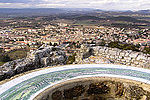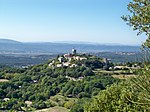Saint-Paul-Trois-Châteaux Cathedral

Saint-Paul-Trois-Châteaux Cathedral (French: Cathédrale Notre-Dame-et-Saint-Paul de Saint-Paul-Trois-Châteaux or Cathédrale Notre-Dame de Saint-Paul-Trois-Châteaux) is a former Roman Catholic church located in the town of Saint-Paul-Trois-Châteaux, France. It was a national monument. It was formerly the seat of the Bishop of Saint-Paul-Trois-Châteaux. The diocese (sometimes, like the town, also known as Saint-Paul-en-Tricastin) was created in either the 4th or the 6th century and was abolished under the Concordat of 1801, when its territory was divided between the Diocese of Avignon and the Diocese of Valence, known since 1911 as the Diocese of Valence (–Die–Saint-Paul-Trois-Châteaux).
Excerpt from the Wikipedia article Saint-Paul-Trois-Châteaux Cathedral (License: CC BY-SA 3.0, Authors, Images).Saint-Paul-Trois-Châteaux Cathedral
Rue de Monseigneur Sibour, Nyons
Geographical coordinates (GPS) Address External links Nearby Places Show on map
Geographical coordinates (GPS)
| Latitude | Longitude |
|---|---|
| N 44.349444444444 ° | E 4.7675 ° |
Address
Cathédrale Notre-Dame
Rue de Monseigneur Sibour
26130 Nyons
Auvergne-Rhône-Alpes, France
Open on Google Maps







